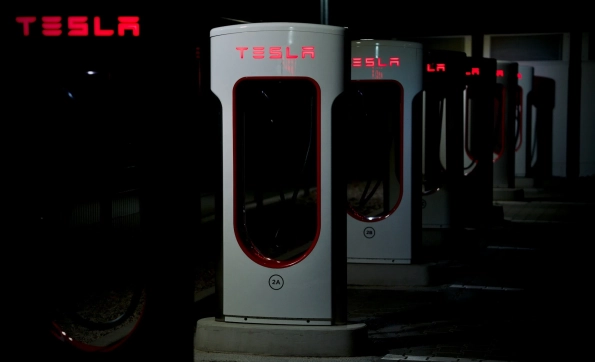As the world accelerates toward electric vehicles (EVs), a new frontier of cybersecurity concerns has emerged. According to Forbes, EVs are now a major factor in transportation with the shift to cleaner and more energy-efficient sources.
With millions of these vehicles expected to be on the road soon, the number of charging stations is only set to rise in the next decade. In this case, EV chargers—particularly public charging stations—are becoming an attractive target for hackers.
But how real is this threat? Could electric vehicle charger stations become the next conflict zone for cyberattacks?
The Growth of Ev Infrastructure
The global electric vehicle market has had a fantastic voyage over the past few years, with the International Energy Agency (IEA) estimating that 145 million electric cars will be on the road by 2030. Because of this, EV charging infrastructure is also gaining speed with the growth rate. Public and private charging stations have ascended to the roof worldwide, as people have to charge their cars more often.
Nevertheless, this upswing is also susceptible to potential dangers.
Why Ev Chargers Are Vulnerable
At first glance, one may consider an EV charging station as a highly unlikely target for cybercriminals. However, if you understand the technology used to drive these systems, you will see that they are not just power outlets—they are IoT devices, connected to the internet and often integrated into broader networks.
This connectivity introduces a range of vulnerabilities that hackers could exploit:
Data theft: Many charging stations require users to provide payment, personal, or even vehicle data, which is transferred online. The trove of this data becomes a regime for hackers if its security is not sufficiently handled.
Ransomware attacks: Just like other devices in the network, EV chargers, too, could become the object of ransomware attacks. A hacker can exploit and seize the entire charging network, demanding ransom from the operator or the drivers themselves.
Remote control exploits: Because EV chargers are internet-connected, a hacker may be able to take out or operate charging stations remotely, thus posing a crisis to those businesses that depend on EV fleets.
Potential Entry Points for Cyberattacks
Charging stations, particularly those attached to public networks, have many weaknesses. One common attack route is through their charging management systems. These systems are to be reconciled with the EV and the electrical grid. As such, threat actors are able to access a wide array of sensitive information like customer details, billing, and grid performance data. If hackers had a way into this data, or take control of it and therefore also manipulate the power flow, then quite a mess would ensue.
Hackers could also exploit supply chain vulnerabilities and access systems by attacking third-party vendors who provide EV components or software.
Another entry point is poorly secured firmware within the chargers themselves. Many EV chargers operate on outdated or vulnerable software, which can be easily exploited. Such weaknesses could allow attackers to turn off charging stations remotely or compromise the electrical grid itself.
For B2B companies involved in the EV ecosystem—whether they’re manufacturers, operators of public charging networks, or fleet operators—the stakes are incredibly high.
A successful cyberattack could lead to operational disruption. Imagine a ransomware attack shutting down a public charging network or, worse, an entire fleet of delivery vehicles relying on EVs. The financial and reputational costs could be astronomical.
Additionally, if the compromised data is identified as that of users or vehicles, the company may incur severe legal penalties
How Can Businesses Protect Themselves?
So, what can businesses like yours do to protect their EV charging infrastructure from cyber threats? According to Dorot, application developers can implement several countermeasures, such as input validation and sanitization, monitoring anomalous behavior like spikes in traffic and failed log-in attempts, blocking of non-relevant Geos, providers, and proxy services, and limiting the scope of requests that can be made by the application.
Some critical steps to take:
Adopt zero trust architecture: By assuming that every user and device—even those inside the network—can most likely be compromised, firms can implement a control system with better security against unauthorized access to charging infrastructure.
Regularly update firmware: As with other IoT devices, this is crucial for EV chargers. Oftentimes, these updates bring in necessary security patches intended to plug security loopholes.
Implement end-to-end encryption: Companies need to see to it that all the data sent between the network and EV chargers is encrypted, thus, the cybercriminals come to a dead end while trying to tap the information.
Conduct regular security audits: It is advised that your firm often checks if EV charging infrastructure has any vulnerabilities. Penetration testing is a means that allows the identification of such security holes even before the malicious actors get hold of them—this, too, can help.
The Future of Ev Cybersecurity
EV technology is still developing, and so are the associated vulnerabilities; hence, cybersecurity is still another road that the industry is traveling. As more businesses and people switch to EVs and embrace cleaner transport, the security of charging infrastructure will be the main concern. Governments and regulators are already stepping in, with countries like the UK introducing cybersecurity standards specifically for smart devices, including EV chargers.
For instance, the UK’s Product Security and Telecommunications Infrastructure (PSTI) Act mandates security requirements for network-connected devices, aiming to protect against cyber threats. Similarly, in the EU, the Network and Information Security (NIS2) Directive addresses cybersecurity for essential infrastructure, such as EV charging networks, ensuring stricter security protocols are in place. These initiatives represent just the start, as global standards are expected to evolve to keep pace with advancing technology and the rising volume of EVs on the road.
Conclusion
Prepare to protect tomorrow
Although EV chargers are not precisely one of the common cyberattack targets yet, the danger is still there—and increasing. For drivers, a security breach could mean stalled travel plans, compromised personal data, or unauthorized access to charging accounts. For operators and businesses, successful attacks can lead to costly service disruptions, reputational damage, and liability issues. The time to act is now. By proactively implementing robust cybersecurity measures, enterprises can safeguard their infrastructure, shield their customers, and avoid future vulnerabilities.
The race to secure EV charging infrastructure has begun—those who take action today will set the standards and lead the market tomorrow. Ready to lead?



